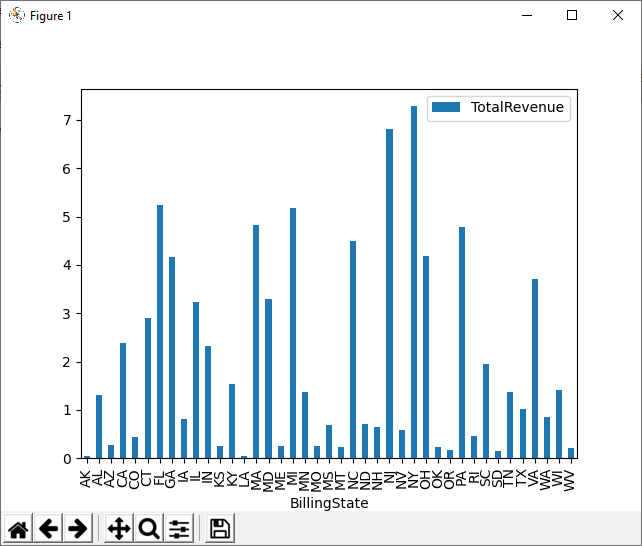Discover how a bimodal integration strategy can address the major data management challenges facing your organization today.
Get the Report →How to Visualize SAP Data in Python with pandas
Use pandas and other modules to analyze and visualize live SAP data in Python.
The rich ecosystem of Python modules lets you get to work quickly and integrate your systems more effectively. With the CData Python Connector for SAP ERP, the pandas & Matplotlib modules, and the SQLAlchemy toolkit, you can build SAP-connected Python applications and scripts for visualizing SAP data. This article shows how to use the pandas, SQLAlchemy, and Matplotlib built-in functions to connect to SAP data, execute queries, and visualize the results.
With built-in optimized data processing, the CData Python Connector offers unmatched performance for interacting with live SAP data in Python. When you issue complex SQL queries from SAP, the driver pushes supported SQL operations, like filters and aggregations, directly to SAP and utilizes the embedded SQL engine to process unsupported operations client-side (often SQL functions and JOIN operations).
Connecting to SAP Data
Connecting to SAP data looks just like connecting to any relational data source. Create a connection string using the required connection properties. For this article, you will pass the connection string as a parameter to the create_engine function.
You can connect to SAP systems using either librfc32.dll, librfc32u.dll, NetWeaver, or Web Services (SOAP). Set the ConnectionType connection property to CLASSIC (librfc32.dll), CLASSIC_UNICODE (librfc32u.dll), NETWEAVER, or SOAP.
If you are using the SOAP interface, set the Client, RFCUrl, SystemNumber, User, and Password properties, under the Authentication section.
Otherwise, set Host, User, Password, Client, and SystemNumber.
Note: We do not distribute the librfc32.dll or other SAP assemblies. You must find them from your SAP installation and install them on your machine.
For more information, see this guide on obtaining the connection properties needed to connect to any SAP system.
Follow the procedure below to install the required modules and start accessing SAP through Python objects.
Install Required Modules
Use the pip utility to install the pandas & Matplotlib modules and the SQLAlchemy toolkit:
pip install pandas pip install matplotlib pip install sqlalchemy
Be sure to import the module with the following:
import pandas import matplotlib.pyplot as plt from sqlalchemy import create_engine
Visualize SAP Data in Python
You can now connect with a connection string. Use the create_engine function to create an Engine for working with SAP data.
engine = create_engine("saperp:///?Host=sap.mydomain.com&User=EXT90033&Password=xxx&Client=800&System Number=09&ConnectionType=Classic&Location=C:/mysapschemafolder")
Execute SQL to SAP
Use the read_sql function from pandas to execute any SQL statement and store the resultset in a DataFrame.
df = pandas.read_sql("SELECT MANDT, MBRSH FROM MARA WHERE ERNAM = 'BEHRMANN'", engine)
Visualize SAP Data
With the query results stored in a DataFrame, use the plot function to build a chart to display the SAP data. The show method displays the chart in a new window.
df.plot(kind="bar", x="MANDT", y="MBRSH") plt.show()

Free Trial & More Information
Download a free, 30-day trial of the CData Python Connector for SAP ERP to start building Python apps and scripts with connectivity to SAP data. Reach out to our Support Team if you have any questions.
Full Source Code
import pandas
import matplotlib.pyplot as plt
from sqlalchemy import create_engin
engine = create_engine("saperp:///?Host=sap.mydomain.com&User=EXT90033&Password=xxx&Client=800&System Number=09&ConnectionType=Classic&Location=C:/mysapschemafolder")
df = pandas.read_sql("SELECT MANDT, MBRSH FROM MARA WHERE ERNAM = 'BEHRMANN'", engine)
df.plot(kind="bar", x="MANDT", y="MBRSH")
plt.show()






